Determine voltage across ![]() and
and ![]() using voltage division rule.
using voltage division rule.
Assume that
![]() ,
, ![]() ,
, ![]() ,
, ![]() and
and ![]()
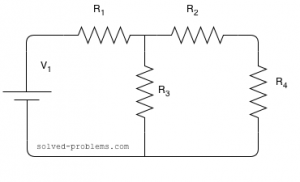
Solution:
Please note that the voltage division rule cannot be directly applied. This is to say that:
![]()
The reason is that some current of ![]() is passing through
is passing through ![]() and
and ![]() branch. If the branch was broken at some point, for example as:
branch. If the branch was broken at some point, for example as:
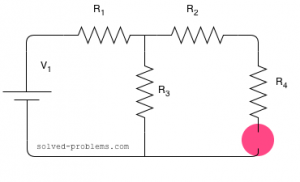
we could apply the voltage division rule and say
![]()
But for the original circuit, the equation above is not correct. To solve the circuit using the voltage divider, we have to find the Thevenin equivalent of the colored circuit: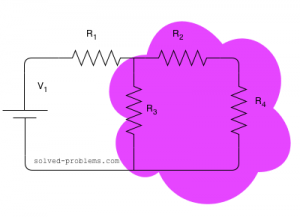
![]() and
and ![]() are in series and their equivalent equals
are in series and their equivalent equals ![]()
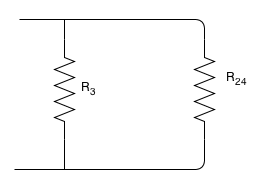
![]() and
and ![]() are parallel and their equivalent equals
are parallel and their equivalent equals ![]()
So, the circuit is simplified to this level now:
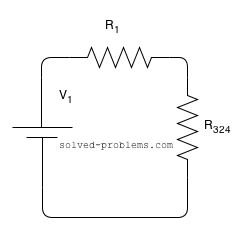
And the voltage division rule can be applied directly:
![]()
Please note that ![]() is the voltage across
is the voltage across ![]() and the series combination of
and the series combination of ![]() and
and ![]() as shown below:
as shown below:
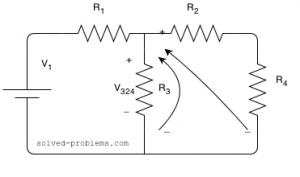
Now, we can use the voltage division rule to find ![]() and
and ![]() . We can ignore the rest of the circuit and assume that this portion is as:
. We can ignore the rest of the circuit and assume that this portion is as:
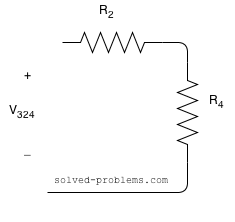
and write:
![]()
![]()
thanks for this site
TANKS
Hi,
Thanks for this site. As this helps me solve Network Theorems circuits easily.
Where current
Erro why
Buz i=1A
Req= 20
Wait, so does this mean to find it would be:
it would be:
If this were the case the answer would be 15/2?
No, this is not correct.
thank u very much i really enjor dis site.my question goes dos.plz if we hv lyk 10resistor.in.a circuit diagram dt dy are in series nd parallel.wt 10 volt.thats we hv five loop.the question nw say.using circuit diagram above,calculate.the value of current in 10k resistor.using thevenin theorem,norton thorem.kvl nd kcl.principle.replace d branch a,b,c,d.show dat d transfer resistance of d circuit remain d same.are we going to use circuit reductions fo it.thanks.nd i will be happy if u can help me to solved it wt any circuit dt have up to ten resistor.thank uGod bless
so nce
vielen dank
thank you
شكرا جزيلا
thanks for the site.